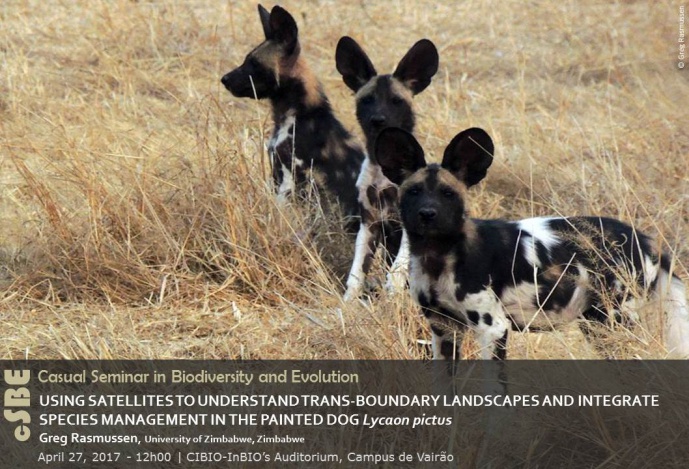USING SATELLITES TO UNDERSTAND TRANS-BOUNDARY LANDSCAPES AND INTEGRATE SPECIES MANAGEMENT IN THE PAINTED DOG Lycaon pictus

CASUAL SEMINAR IN BIODIVERSITY AND EVOLUTION

In increasingly human dominated landscapes anthropogenic disturbance and mortality threatens wildlife populations from increasing isolation and subsequent interference with important biological processes such as dispersal and natural gene flow.
This presentation investigates the importance of connectivity, and identification of landscapes that can be deemed "appropriate biological units. Satellite data in both the form of habitat mapping and collar data acquisition can facilitate species habitat preference models that can lead to informed decisions and species specific landscape strategies. Across such landscapes wide ranging species are often the most vulnerable to habitat fragmentation, and this presentation will demonstrate the value of integrated species modelling using data from the wolf in Canada.
It will then both share data on the painted dog, and a new initiative to meaningfully use collars as a conservation tool. These data will reveal unlikely habitat preference and highlight how both collars and these data can lead to the facilitation of a landscape strategy for this and other species.
Greg Rasmussen is a Research Associate and part time Lecturer at the University of Zimbabwe. He is also affiliated with the Wildlife Conservation Research Unit at Oxford University in the UK where he completed his PhD. He has a diverse range of research interests with his most recent interests being trans-boundary conservation. In 1989 he started researching the endangered painted dog (Lycaon pictus). During those early days he had a vision for an all-encompassing conservation project that dealt with ecological as well as socioeconomic issues that impinged on painted dogs. With this vision, he founded Painted Dog Conservation NGO for the protection of the painted dogs and their habitat, that engaged and incorporated local communities in protecting painted dogs in Zimbabwe. Recently (2014), he founded the Painted Dog Research Trust to focus on new bold conservation visions. These include the birth of a field based conservation ecology centre to inspire and train tomorrow's generation of conservationists.
[Host: Raquel Godinho, Conservation Genetics and Wildlife Management]
Image credits: Greg Rasmussen